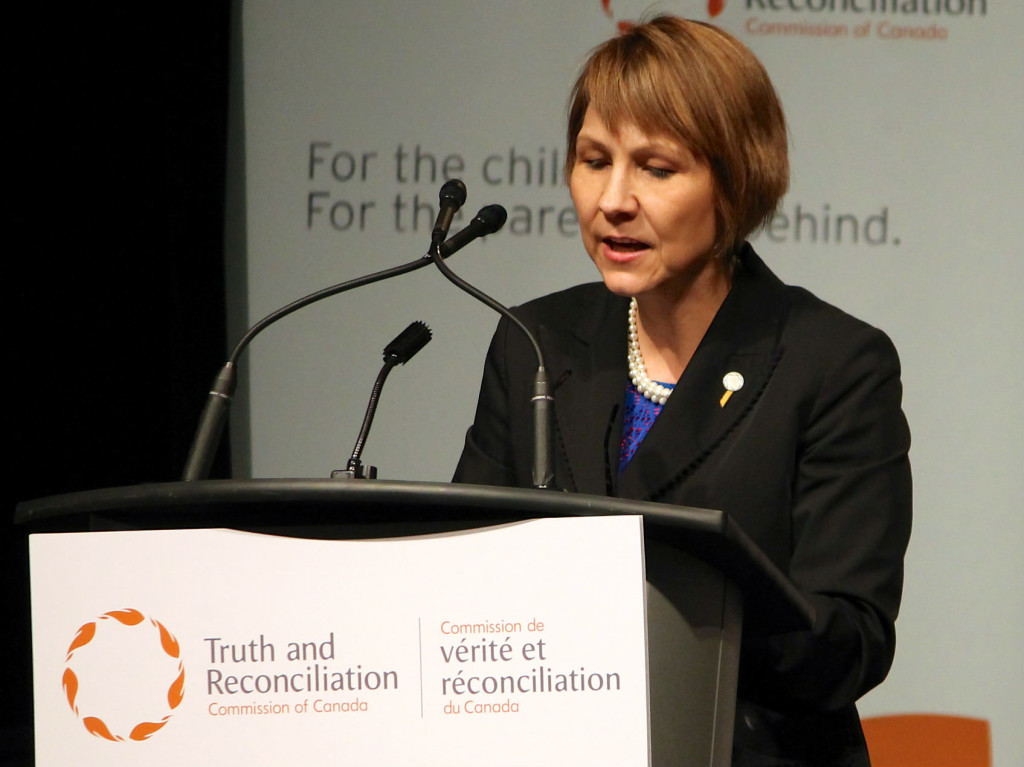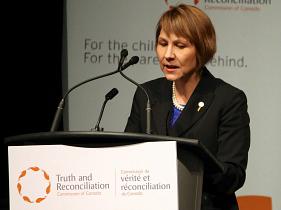Truth and reconciliation: First Nations kids won, now it’s time for a better relationship with Indigenous peoples
January 26, 2016 was a heartfelt, emotional day as First Nations children won a much anticipated human rights tribunal ruling on culturally based equity in child welfare.
In 2007, the First Nations Child and Family Caring Society of Canada (the Caring Society) and the Assembly of First Nations (AFN) filed a complaint pursuant to the Canadian Human Rights Act. The groups alleged the federal government had improperly implemented Jordan’s Principle, and that the inequitable provision of child welfare services to 163,000 First Nations children is discriminatory under section 5 of the act.
Named after Jordan River Anderson (1999–2005), who spent two unnecessary years in hospital while the federal and Manitoba governments argued over who should pay for his complex medical needs, Jordan’s Principle states the government of first contact is responsible for child services and should seek compensation only after these services have been delivered. The human rights complaint was filed as a last resort after the federal government failed to implement reforms to correct inequities that had been documented as far back as 2000.
In September 2008, the Canadian Human Rights Commission referred the case to the Canadian Human Rights Tribunal for a full hearing on the facts. The federal government brought a series of unsuccessful motions to dismiss the case, which delayed hearings until February 2013. The hearings went on for 72 days, concluding in October 2014. Then this January, nine years after the complaint was filed, the tribunal delivered its long awaited ruling. It found:
AANDC (Aboriginal Affairs and Northern Development Canada) is involved in the provision of child and family services to First Nations on reserves and in the Yukon; that First Nations are adversely impacted by the provision of those services by AANDC, and, in some cases, denied those services as a result of AANDC’s involvement, and; that race and/or national or ethnic origin are a factor in those adverse impacts or denial.
The federal government controls and funds First Nations child and family service agencies in the provinces and Yukon. With the exception of Ontario, which is funded according to the 1965 Indian Child Welfare Agreement, the provinces and territories receive federal funding through Directive 20-1, the Enhanced Prevention Focused Approach (EPFA), and other agreements established to help deliver culturally relevant services to First Nations children and families.
RELATED: Canada racially discriminates against First Nations children, tribunal rules
Directive 20-1, first implemented in 1989, was examined in a 2000 report coming out of a national policy review, and then again in the 2005 Wen:de report. Both reports found the directive’s approach to be inequitable (First Nations children received much poorer services than other children in Canada), particularly in terms of family support services. They also both outlined detailed solutions to improve the funding formulas and policies to better reflect the needs of First Nations.
As the tribunal pointed out in its ruling in January, the government failed to act on these warnings, which resulted in children continuing to be removed from their homes:
Despite being aware of these shortcomings in Directive 20-1 based on numerous reports, AANDC has not followed the recommendations in those reports and has perpetuated the main shortcoming of the [First Nations Child and Family Services] Program: the incentive to take children into care—to remove them from their families.
Although AANDC (now Indigenous and Northern Affairs Canada, or INAC) provided the rollout of the EPFA in 2007, with added funding for prevention services, agencies were still underfunded and had waited long enough to provide adequate services to children and their families. The Canadian Human Rights Tribunal looked at inequities across the four formulas mentioned above and found the government was falling “far short of its objective” in making sure agencies were properly equipped to deliver culturally relevant services on reserve in line with provincial legislation.
In 2015, the Truth and Reconciliation Commission of Canada (TRC) released its 94 “calls to action” along with a seven-volume final report documenting the lived experiences of First Nations, Métis and Inuit peoples who attended Canada’s residential schools. The TRC’s very first recommendation deals with child welfare (e.g., reducing the number of children in care) and improving the system for Indigenous communities.
It seems serendipitous that the tribunal ruling was released on the heels of the TRC’s final report late last year. We have a unique opportunity in Canada to engage in reconciliation with Indigenous communities and create a country everyone can be proud of.
Reconciliation has many meanings. In child welfare, the Touchstones of Hope framework guides a movement to put reconciliation into practice so that we are moving forward together in a respectful way to achieve better outcomes for Indigenous children and youth. Recognizing that Indigenous peoples are in the best position to make decisions about Indigenous children and youth, the framework outlines a process (truth telling, acknowledging, restoring and relating) and principles (culture and language, non-discrimination, self-determination, structural interventions to remove systemic barriers like poverty, and a holistic approach) for those involved in child welfare activities.
The Touchstones of Hope movement has existed for more than a decade in Canada and the United States, its principles established by those working in Indigenous child welfare in both countries. The framework was piloted in British Columbia between 2008 and 2012 for five First Nations child and family service agencies. Researchers at the University of Toronto subsequently found the movement shifted the worldviews of participants, changed policies and practice, and that it had great potential for creating change in child welfare.
In a recent editorial, several drafters of the original Touchstones framework argued it is still the best guide for Indigenous child welfare, but that its potential could be lost if we lose sight of this progress. “As relevant as the Touchstones were in 2005, they are even more relevant today given the building reconciliation movement,” it read. “Canadian child welfare must embed them quickly while the public spotlight remains because once it dissipates, and it will, it will be much more difficult to move the mainstream child welfare mountain.”
Although momentum for the Touchstones movement has been slow, reconciliation has come to the forefront of media and public debate this past year, touching the minds, hearts and spirits of people in Canada who knew about the impacts of residential schools and of those who are learning about them for the first time. With the tribunal ruling in January, Canada is faced with a choice: we can continue to implement a system that has been detrimental to children, or we can take a chance on a proven alternative like the Touchstones of Hope.
The Canadian Human Rights Tribunal found that inequitable funding for child welfare on reserves amounts to discrimination. If we look hard enough, we can see prejudice deeply engrained within the veins of Canadian society. For generations, Indigenous peoples have been treated differentially because of their race. Many people in Canada have been tremendous allies, standing together with Indigenous communities and championing equity, fairness and self-determination. However, there will still be those who, in thinking or speaking about Indigenous issues, will resort to stereotypes—either because they lack knowledge or because prejudice lies within them.
Today, we have an opportunity to change Canada’s story of its relationship with Indigenous peoples. Let us become more interested in learning not only about the loss, heartache and suffering of Indigenous communities in Canada, but also about their strength, resilience and significant contributions to society. Let us respond to the TRC’s calls to action to improve the lives of First Nations, Métis and Inuit peoples. Let us support January’s tribunal ruling by holding the government accountable for its treatment of generations of children and putting an end to discrimination in the provision of all public services for First Nations children and families.
Let us become a Canada that celebrates and lives by reconciliation—a Canada where every child, no matter what their race or ethnic origin, has a fair and equal chance to achieve their dreams and be proud of who they are.
Andrea Auger is the Reconciliation and Research Manager at the First Nations Child & Family Caring Society of Canada.
This article was published in the March/April 2016 issue of The Monitor. Click here for more or to download the whole issue.
This piece was first published by the Canadian Centre for Policy Alternatives, an independent and non-partisan research institute concerned with issues of social, economic and environmental justice, under the title, “This election, let’s have a real debate about legalizing marijuana”. It’s republished here under thi
Read More..
Comments
There are 0 comments on this post













